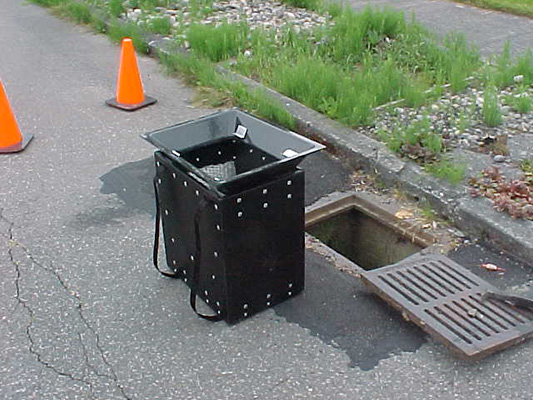
ISGP: Make a Plan
Your Stormwater Pollution Prevention Plan (SWPPP) describes what you are doing, how you will do it, and what BMPs you are going to implement to maintain permit compliance at all your discharge points. Each permitted project must submit a Stormwater Pollution Prevention Plan (SWPPP); outlined in Section S3 of the ISGP.
The SWPPP outlines what the project compliance expectations are and what tools and techniques the site will implement to achieve those outcomes. Ecology has created a SWPPP template that can be used to generate the necessary information. It is not required to utilize this template but it does act as a guide to what is necessary to include.

Your SWPPP
The SWPPP is a “living document” and will change over time. It is critical to make sure that SWPPP changes are made as adaptive management of stormwater changes or personnel and/or operations changes over time.
SWPPP Component: Title Page
The title page of the SWPPP should identify all necessary information on site location, site name, owner/operator, qualified person(s), permit number, receiving water, and other information such as identified participants in the stormwater program on-site. This is essentially the one-page stat sheet of the SWPPP and gives you the critical information on one page.
What to Include on a SWPPP Title Page
- Site Name
- Site Address
- Site Phone Number
- Site Operator Name
- Site Operator Phone Number
- Site Operator Email
- SWPPP Creation Date

SWPPP Component: BMPs
A major component of the SWPPP is outlining the Best Management Practices (BMPs) you will be implementing on your site. BMPs are….There are certain BMPs required at all sites, some BMPs that are facility-specific, and even more optional BMPs that can be utilized to avoid exceeding water quality benchmarks set by the permit.
To learn more about BMPs and to see examples, please see our Industrial BMP page

SWPPP Component: Site Maps
The site map is one of the most critical elements of any stormwater program. Without having 100% confidence in how stormwater moves both at the surface and in the subgrade of the facility, BMP decisions become more “guessing” and “hope” than focused decision-making. The site map(s) must include over 15 pieces of information and often requires more than one map to achieve. The site map should mirror the narrative in the site description of the SWPPP so that the reader can identify what is being discussed in the SWPPP while looking at the site map.

SWPPP Component: Spill Prevention and Emergency Cleanup Plan
Your SWPPP must include a SPECP that outlines the BMPs you will use to prevent spills that can contaminate stormwater. This should also include information about the type, location, and contents of spill kits throughout the site, as well as any employee training and tracking needed to ensure spill response readiness. This document should be able to stand alone apart from the SWPPP to be utilized as a tool by site staff.
SWPPP Component: Sampling Plan
Like the SPECP, the Sampling Plan is not only a required element of the SWPPP but also can act as a good stand-alone document. That way if the qualified person is not available or ceases to work for the company, there are instructions on how to collect samples appropriately for another trained person or for a successor taking over that position. The sample plan should identify where samples are collected; what is being sampled for at each location; sample collection procedures; the laboratory sample handling procedures; chain of custody, labeling, and other recordkeeping instructions; and a sample log to be filled out for each sampling event. Review the Monitoring page to get more details on what goes into a Sampling Plan.
7 Components of a Sampling Plan
- Identify all discharge locations
- Identify all sampling locations with a unique ID
- Identify any substantially identical outfalls
- Identify Staff responsible for sampling
- Specify sample collection and Handling procedures
- Specify procedures for reporting results to Ecology (DMRs)
- Identify sampling parameters and their holding procedures and analytical methods

SWPPP Component: Education Program
Employee education must be conducted annually at a minimum, and any time new staff that will be managing or responsible for stormwater are hired. The Employee Education Program needs to be outlined in the SWPPP. There are commercially available training programs available, but it is always important to supplement those programs with site-specific knowledge of spill control and stormwater flow and BMPs
Other Considerations
SWPPP Certification
Any time a new SWPPP is created or an existing SWPPP is modified, someone with signing authority for the site must complete a new SWPPP Certification form.
Maintenance Logs
Keeping a maintenance log of BMP maintenance such as sweeping, system cleaning, filter changeouts, media placement, etc is very important in completing the Annual Report and in tracking budgetary costs. Some of these maintenance-type BMPs are mandated by the permit and it is important to have them on record.


